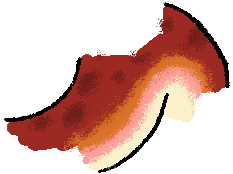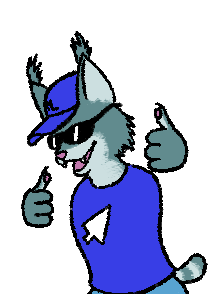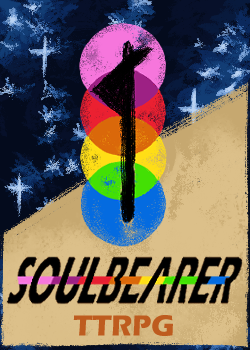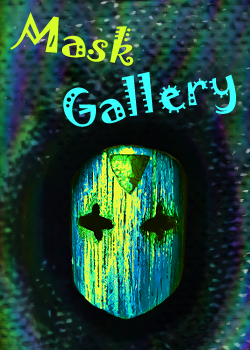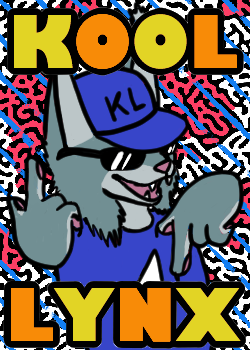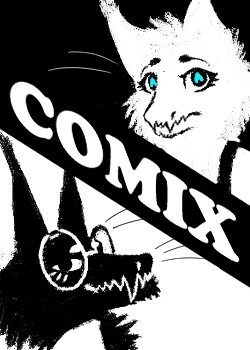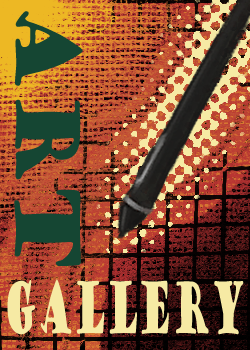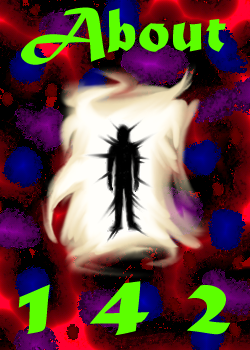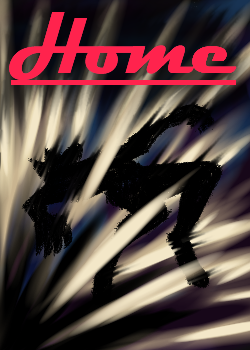03/30/2025 - Racing Lagoon

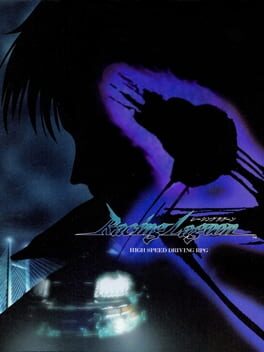
I would like to preface by saying I do not consider my opinion the pinnacle of truth, nor do I claim it will remain firm and unchanging. Originally, I was going to claim I'm not a fan of racing games, and tell you I could name every one I've played from memory. While I can, in the act of trying to recall I realized that I enjoyed the vast majority of the eleven I've played, and this one was a beast of its own.
Racing Lagoon, released exclusively in Japan in 1999 for the Sony Playstation by Squaresoft (now Square Enix), is a street racing RPG set in the city of Yokohama, following a beginner street racer named Sho Akasaki. The game is an actual RPG, complete with random encounters, a traversable map which gradually opens up, being able to upgrade your equipment and having a colorful cast of characters to interact with, all while being a driving game.
In this review I will cover three main points: Music/Art, Story, and Gameplay. "Music and Art" refers not only to the quality of the soundtrack and art direction, but how it's used within the game. "Story" encompasses both overall story, as well as worldbuilding and writing. "Gameplay" refers to interactive elements, from combat to getting around.
Music and Art
If there is one thing
Racing Lagoon has in spades, it's style. There is a certain atmosphere to this game that I can't quite wrap my head around. When I first started the game I broke out laughing, and felt almost embarrassed to watch as two gangly, strangely proportioned guys suddenly flailed themselves offscreen and onto their feet. It's dorky, strange, with jank animations and some of the most unconventional framing at times, but it is
soooo cool once you've given it time to sink in. Rain-washed streets, the blur of headlights and roar of engines, teenagers with tuned up cars meeting beneath the full moon to decide who will be Yokohama's fastest legend.
This is what Racing Lagoon is all about.
To really get at the meat of the visual design of the game, I have to break it down by gameplay, which consists of three states: racing, exploration, and cutscenes. Even limited to PSX graphics, the game excels in nearly every area. When racing, you... Race. The tracks you're given are incredibly varied, from winding mountain roads to breezy highways to cramped city streets to even professional race tracks. Being a game about street racing, it's no surprise that these tracks feel believable as actual city streets, but the amount of variation even within these categories is impressive. Any given city-themed track for example has different scenery so that it fits within that section of the city. An office park, Chinatown, an outdoor mall, a quiet neighborhood, a wharf. It would have been easy to just copy and paste scenery around differently shaped tracks, but each one feels like you're actually in that section of the city.
I can't forget the cars, as you get the best look at them while racing and in the machineCOMPLETE menu. The cars are impressively varied, with a huge number of bodies to choose from, and even multiple shapes any given body can come in. While the bodies themselves are based off of real cars, meaning I can't really comment on their design, there is an unexpectedly huge variety, ranging from sedans to SUVs to some more absurd choices I don't want to spoil. Pretty much, if you see a car in-game, it is drivable one way or another. Even if you don't think it would be, it is, and I absolutely LOVE that. As stated before there are even variations for each car. There are body kits you can choose from, spoilers, wheels, and cars even change their appearance slightly based on what time of chassis/drivetrain you have. For example, putting a body on a 4 wheel drive chassis will add extra lights to it, or switching it from front-engined to rear-engined will make the back of the car larger. Subtle, but you have to appreciate that attention to detail. There are a ton of paint jobs you can find, though they're limited to solids and two-tones, and a plethora of decals to choose from as well. Not only does the game allow you to change the stats of your car, but it the freedom to make it look just how you'd like is impressive for a game of its time.
You still get to see your car while exploring, but extremely zoomed out from an isometric sort of perspective. The exploration aspect of the game revolves around navigating through the city of Yokohama as a little tiny version of your car, visiting different destinations to race an talk to NPCs. The city itself is quite pretty to look at from this detached perspective and really plays into the narrative of the game, which I'll touch on later. Here you are a lone driver, coasting through blue city streets surrounded by tall, dark buildings on all sides. The city is bustling, with a plethora of NPC drivers out and about at any given time. This section of the game is calm, and actually quite relaxing at times. The ai traffic actually prefers certain streets over others, and much like an actual city there are secluded streets to pass through with less bother from traffic. I won't spoil too much here but there are actually three other areas to drive through, each with a distinct feeling from the others.
Finally, we come to cutscenes, where much of the game's personality can be found.
Racing Lagoon's character interactions are unlike more traditional RPGs, where you're treated to a little dialogue box while sticking to the overhead view. Instead, this game takes a visual novel approach, blacking out the screen and opening up again to Sho, and whoever else he's talking with overlayed onto a backdrop... Except it steps beyond traditional visual novels as well, and often animates the characters, if only a little bit. Here is where the game's character designs, animations, and use of framing really shines. Almost every character in
Racing Lagoon is capital C
Cool, with their own fashion and visual personalities. Their proportions are strange and elongated, and while I'll ever get tired of Sho's comedically tiny butt (especially next to Ikki's comparative dumptruck in one scene) it's hard not to come out of the game with a certain appreciation for their appearances. It's a little like Baki but much less extreme, where the proportions, posing and animation can be goofy, but pretty soon something in your brain gets rewired and you realize they're really cool and charming. I absolutely love the designs of the main cast, specifically the members of Bay Lagoon Racing and some of the Nightracers. Their baggy, reflective, logo-studded outfits leave them looking tough and fast. For them being a street racer isn't a hobby, it's a lifestyle, a direction for personal and professional growth, and they
look the part.
The way characters are placed within the screen is incredibly unique too, often times you aren't treated to two faces in a shot between two characters, but
four. One of the game's favorite moves is to throw out a medium shot of a character or two standing somewhere, then layer in closeups of their faces on top. This means you can still see someone speak while their back is turned, or while the camera is skewed at an odd angle. It lends a unique look to most scenes, giving them a comic-adjacent kind of feel I haven't really seen anywhere else. Because all these scenes are pre-rendered it also means everything save for the character animation can be pretty high quality as well. Speaking of the animation, it comes off more as sort of flailing around than anything else. Some movements read well and add character, others are just kind of incoherent. It's a problem in a few wide shots where feet just seem to move at random below people. It's clearly a place where they chose to save some money, but I got used to it and grew to like it.
When the visual novel style works though, it
works. You end up with scenes like Sho standing off to the right side of the screen, throwing question after question at a stranger, while that person is shown in the background from the waist up, intense music blaring as this person just
spins in place. It sounds weird when you describe it, but it is such a cool moment. The music plays a big role in that.
Racing Lagoon's music, even now, is like a breath of fresh air. It's some kind of mixture between jazz, hip hop, and electronic, a perfect combo for a band of teens hitting the street and racing for the hell of it. A few characters get their own themes, and each racing team gets a theme of their own. While I think some of these can be hit or miss as far as reflecting the character(s) they're meant to, they do differentiate the personalities of the teams quite well.
Bay Lagoon Racing's Theme provides a good contrast to the
Honmoku Night Racers, and these are only the first two teams you meet. The music in most casual cutscenes as a sort of RPGish feel to it, but when you get into the races,
it gets funky.
But it's my opinion that the music is strongest later in the game, when things get more serious. I don't want to spoil much here, but there's one song in particular that comes to mind, which plays a few times in the latter half of the story. Up until this point, about 95% of the music you've heard has had the same kinda feeling. "This is chill, it's fun. We're cool dudes in cool cars doing cool things..." But this unnamed song when it enters... It's
fast,
angry,
diabolical. It doesn't care about being cool, or chill, or even having fun. Put alongside the racing music you've been listening to previously, it feels almost inappropriate, uncouth. It paints the scene in a kind of horror that's stuck with me for a while now, after finishing the game.
Overall, I think no song captures the feeling of
Racing Lagoon more fully than
Suspicion. It's no wonder it was picked for the trailer. It's fast, but not confident, urgent, even desperate. LeweMan in the comments of the video I hyperlinked describes the song as
The song that plays when you're driving to your friend's house after he texts you "Thanks for everything" at 3am, and... Dark as the comparison is, yeah, yeah that's its emotion to a T. There's an emotional depth here that's unexpected, but not unwelcome.
Story
The biggest breath of fresh air about this game is its story. I DID NOT KNOW JUST HOW MUCH I NEEDED A RACING GAME WITH STORY. I think racing games commonly get lumped into the "sport" genre, which leaves most devs comfortable feeling like they don't need to innovate, just make something decently fun to play and call it a day. The only racing games I can think of that had stories were GTA 5, and Destiny... The former is primarily a third-person-shooter rpg where races are just a side thing (probably, I only ever played GTA Online), while the latter is a first-person-shooter which had a ONE TIME racing event that was genuinely
really good, had
no impact on the game's story, and they never, ever brought it back. (BTW I got absurdely good at Sparrow Racing League and the racing armor became my character's go-to look from that point on, just sayin').
What I'm trying to say is, as far as my experience with racing games is concerned, an actual narrative-based racing game with like, characters and plot developements and the whole nine yards, is
completely unheard of within the genre. This makes a 26 year old game somehow fresher and more unique than the majority of racing games released in those 26 years after. The closest I can think of is a campaign style, where you upgrade your car and unlock new tracks/cars/races. I suppose you can roleplay a campaign into being a story if you really wanted to, but unlike
Lunacid I don't think most racing games are really designed for adding in your own flavor.
Lunacid leaves room for improv, Real Racing 3 or BallisticNG leave you to write the entire story yourself.
This isn't to say every game
needs a story. Sports games do tend to be about sport after all, so the joy of playing sport is usually the draw to the game... But it's frustrating to see the sim and cart racer
subgenres swell so large any racing game that
isn't one or the other has a hard time finding air...... So about that story, yeah. Heh heh...
Squaresoft did not have to go so hard with
Racing Lagoon, but they did anyway.
I'm not gonna give a plot summary, no way, but this game is not just about some lowly feller trying to climb his way to the top, it is so, so much more. It's gritty, melodramatic, serious, goofy, confusing, cool, and I cannot get it out of my head, this game speaks to me, this is
EXACTLY WHAT I NEEDED OUT OF A RACING GAME......
I haven't played too many racing games. Including this one, only 11. That may seem like a lot to some, but by comparison I've probably touched 30 first-person shooters at least... However, I have been playing racing games since I was very young.
Star Wars Episode I: Racer on the N64 was my first, and it held a sense of speed I wouldn't be able to recapture until 2024, when I picked up BallisticNG. I think exposure to these kinds of games from an early age has led me to become emotional about racing, melodramatic about it,
wierd about it. I hold the sentiment that racing, at least in fictional worlds, shouldn't really be about wins or losses. Speed, moving swiftly, moving with grace, is a means and an end, all its own. There's a spiritual nature to it, a draw that pulls people in, from professional racers to people like me who just press the gas a little bit harder when the light turns green. I have created characters, a few in my setting, some fighters, some runners, some racers, all fueled by this same mindset of speed as a path without end. This game explores that idea of speed, from a few perspectives, and the cost of its pursuit. Speed is something gorgeous. Speed should terrify you.
Dramatic as that last paragraph was, there's no shortage of drama in
Racing Lagoon. Sho Akasaki is brooding and poetic, frequently slipping into thoughts on the nature of the city, racing, and himself, some of which seem to come straight out of left field, especially to western players. It's melodramitic, for sure, but OOOUUUUUGGGGHHHHH I am such a sucker for people going on intense monologues in their thoughts, it's why
The Silt Verses is one of my favorite pieces of media of all time. Sho's voice works for this game, and while his intensity when alone may seem a little out of place early on, the game falls into stride with him as it goes. Make no mistake, this game's story is a mystery if anything.
My biggest complaint with the story is fairly small, really. I felt like answers were all squished to the final act of the game, leaving it fairly lopsided gameplay-wise, with the last hour or so pretty much being one long cutscene with a couple sparse races in between. If some answers were given earlier on I think it would have created a better feeling of narrative balance, escpecially considering how crazy it gets. I have a feeling some reveals my be hit or miss for some people, but they're certainly creative.
I should also note that, being a Japan-only release,
Racing Lagoon has no official English translation...... But there is a
fan translation! Hilltop did an incredible job translating this game, even including English slang and curses to really reflect that these guys are
street racers. Had Squaresoft ever done a translation themselves it likely would have been more bare bones.
Gameplay
Finally we come to gameplay. Unlike art and music, we
will divide this section in three states, but we'll trade "cutscenes" for "machineCOMPLETE," given they have about as much gameplay depth as any visual novel. To start first with "racing," I have to say this: it's good.
Really good. There are two major categories you can fit all racing games into: games where you brake, and games where you don't. I'll be honest with you right now, I don't bother with games where you have to brake. I like games where the speed is part of the challenge, and you need to time your movements perfectly to get around corners. Until this point, I thought only anti-gravity racers like BallisticNG could fill that role, but seems I was mistaken.
But unlike anti-gravity racers, which tend to give you a high level of control around corners,
Racing Lagoon dares to do the opposite. The game is focused around drifting to make turns, essentially breaking your grip in order to turn more tightly, at risk of steering yourself directly into a wall. Too little drift, you'll loose grip and slide into a wall, too much, you risk hitting the inside of a turn or spinning out all together. Like Ballistic NG,
Racing Lagoon boils down to timing how long you hold the drift button, and applying more or steering as necessary. You drift just the right amount, you'll slide perfectly around a corner eithout having to touch the controls again.
Drifting is
hard though, and your car's always changing which means you'll never quite get used to it, but I'm not exaggerating when I say good drifts can make or break a race. There are some opponents who are just hopelessly faster than you, but often times, even when outmatched in speed,turns become the great equalizer. It's hard to get used yo, and there are a lot of conflicting sources on how to drift, so let me give you the
Definitive Guide:
You got four buttons and a D-pad when racing, pretty much. An analog stick will work in place of the D-pad, but it just won't actually. Tapping the D-pad gives you so much more control than an analog stick. It may feel wierd at first, but sticking with the D-pad will help you in the long run. Anyway, you have four buttons: Square (X on Xbox, Brake), X(A, Accelerate), Circle(B, Drift), and Triangle(Y, change view). Ignore Square, all my homies hate square, you don't need it. Use triangle as you please, but we wanna focus on X and circle. Place your thumb on X/A so you can easily tilt it upward to hold down Circle/B without ever letting go of accelerate, and you're ready to go. Now, you're flooring it into a right turn. Steer right with the D-pad, and eventually your grip will begin to break and you'll start to slide left/offtrack. How do you fix this? Tap Circle/B while still holding right on the pad. Likely you'll spin out the first time, or hit the wall, but you'll have done so
to the right. Circle/B breaks your grip, but it does so
into whichever direction you're turning when you hit it. Accidently hold drift too long, and you can correct by tapping the D-pad in the opposite direction. Hold drift too briefly, and you can just tap while steering to turn tighter. You can always regain grip by straightening out with the D-pad. Remember, use the D-pad if you want to widen out the turn, drift + D-pad if you want to tighten it. Some turns you can drift a bit, keep with the D-pad for a bit, then drift a little more if you are slipping to close to the edge. Generally, you shouldn't be straight holding anything down except the gas, but tapping, tapping, tapping.
Go ahead and track down Spencer's Tuneshop and use the test track there to get a handle of drifting, you
need to. I'm serious when I say you don't need to break at all to beat this game, but you absolutely need to drift, and get at least somewhat good at it. The cars themselves play a big factor in this, as your vehicle's handling will always be changing with how it's tuned. The car you start with won't handle like the one you end with, and neither will handle like the one you had mid-game. Turning, acceleration, weight, grip, top speed, these things all change with how you tune your car, so drifting remains a challenge simply because
that wall's coming at you a helluva lot faster than it used to.
Racing Lagoon is incredibly unforgiving by nature. A lot of races only give you one shot, and the ones necessary to complete the story usually make up for the ability to retry by being quite difficult... If you were playing this game on a Playstation you'd have a really hard time winning races most likely. Too bad there's no way to play a Playstation game on a non-Playstation device...
But if one theoretically were able to do so, whatever program they were using would probably be able to make saves of the game at any given time, it would just be convenient, then save states would be your best friend. There's absolutely no shame in it. I would savescum the heck outta that game. Save at dialogue choices, at the very start of races, in the
middle of particularly brutal races, after completing races. Save all the time. PSX loading times are slow, but I doubt save states would be. That's just a dream though, impossible, I'm sure. I definitely played this game in Japanese on my parents' old Playstation.
Where was I?.. Ah, as I was saying, the racing is quite difficult. You may not need to brake, but driving requires a surprising amount of finesse, and it only gets harder as you get faster. Some tracks have incredibly cramped turns, and if you bump head on into a wall or the back of another car, get ready to lose a lot of speed, but bumping a
rear corner of your car into outer walls is a valid way to get around turns. Something I appreciate about
Racing Lagoon is that it doesn't fake the speed, at least not too much. You start the game slow but by the end you can just blast around tracks, and it
feels like it. I find a lot of games try to emulate speed with visual effects, like camera shake or fisheye lenses, which serve to make a slow racing game just slow
and distracting. Like BallisticNG(with the old physics),
Racing Lagoon doesn't bother with that. It feels fast because you
are fast.
To finish up the racing section of gameplay, I want to note that
Racing LAgoon does an interesting thing with tracks that most games don't... The majority are
one-way. I don't mean you can only drive one direction, depending on certain circumstances you can start from either end, but most tracks don't make a full loop, making them single lap. It's an interesting choice that's very conducive to bullet encounters, but at times I find it means they can be disappointingly short. It usually depends on whether the race on a one-way track is important, or just something quick and easy like a bullet encounter. Like all games there are tracks I like and dislike, though I want to mention that the highway is particularly bad. It's difficult and absurdly long, which makes bullet encounters something to be avoided at all costs in that area, unless you want to throw away three minutes for a part you probably don't want.
On to exploration, it's fairly simple RPG stuff. You get an overworld with multiple areas that you navigate using your little car. Almost every place in the game has an encounter to see each night, so if you want the full
Racing Lagoon Experience it's good to visit just about everywhere each night, just make sure to use save states just in case you accidently go progress to the next night without exploring everything else. Usually the loation you go to to finish the night is the parking lot you start in at Bay Lagoon Wharf, but not always, so be mindful. You can find NPCs around town, get into special races, and compete in Unofficial Races. Go ahead and beat every Unofficial Race you can, you need a certain number of them under your belt to finish the game. It's in the overworld where you'll also experience
bullet encounters, which is pretty much when some dude flashing his headlights and driving about about 35mph over crashes his car directly into yours and oh okay we're racing now. These are the random encounters of
Racing Lagoon, and thankfully these cars don't actually
seek you, even if they come up at inopportune times. They're wholly avoidable, either by running away until they follow their heart somewhere else, or if you're just parked by the side of the road. If you'd like, you can roleplay as one and flash your lights at random vehicles to enter races with them. There are some parts and NPC encounters you can only get this way. Overall I find exploration quite good in
Racing Lagoon. It gives more freedom than traditional RPGs, where paths can be blocked by enemies too difficult to beat unless you scour every dank and dusty corner of the map for items and abilities you might have missed. Skill plays an actual role in this game, and I appreciate that, though you absolutely need to tune your car if you want to beat it.
Finally, we arrive at machineCOMPLETE, the single menu you will become most familiar with while playing. This is where you upgrade (or downgrade) your car through tuning. When you win races you getREWARDS, meaning you can pick something from the opponent's vehicle if you have enough points for it. These can be smaller upgrades like break pads, aerokits or air filters, to larger components like bodies, chassis and engines. Every small item falls into one of those big three categories of body, chassis, or engine. If you lose a race there's a chance the opponent will pick something from
your car, just another aspect of the unforgiving nature of this game.
Anyway, machineCOMPLETE has a surprising amount of depth to it. There are many categories of parts and a decent selection within each category to choose from. Some are upgrades, downgrades or sidegrades, such as chassis for example. Drivetrain and weight both heavily affect the performance of your car, and can be further modified with the parts that fall into the chassis category. Body has to do with aerodynamics, weight, and the appearance of your car, while engine deals mostly with power and acceleration. What I appreciate about the game is that it's not entirely focused on just one aspect of racing. In drag racing it's ideal to make the fastest, lightest car imaginable with the most grip, while more standard races require you to have more weight and balanced tires for better control. Some unofficial races require you to be under a certain power level, so sometimes you need to downgrade your car in order to compete, sometimes making it worse than the one you
started with. The major parts (engine, chassis and body) can be leveled up by racing (wins and losses don't matter), which gives them more tuning slots, but you don't want to get attached. There comes a point where you'll need to upgrade your engine and chassis, though body gives more freedom. I got all the way through the game sticking with the 86 Lev body, save for some races where I needed to save weight. Beware, if you see a major part that isn't labeled with at least a "Lv.1," it won't have any tuning slots and can't be leveled up to gain some. It's fun to cram an entire bus engine under the hood of a VW Beetle, but unfortunately it just ain't worth sacrificing the ability to tune. My only real complaint with machineCOMPLETE is that endgame involves pretty much stacking the same part on your engine, rather than getting a mix of unique parts.
While the rpg is the main draw of the game, I have to give a brief mention to the Warriors Battle Mode, essentially a 1v1 mode against either a cpu racer or another person in splitscreen. Originally I dismissed it, given the playable characters' vehicles are hardly balanced, but the ability to use machineCOMPLETE from the RPG save means that you and your friend can come up with some pretty funny and enjoyable races, especially if you use an endgame save with a ton of parts. I can imagine if I had this game as a kid my brother and I would have spent days tuning different cars to race one another with.
In Conclusion
Racing Lagoon is easily the most impressive racing game I've ever played, and while the writing may be below what you'd expect from a pure-blooded visual novel, it's still a pretty good one to boot. This game is a fresh of breath air, it's iconic, it's unique, it's cool, and engrossing. It's a genuinely good racing game, and and a genuinely good RPG. I can say with honesty that
Racing Lagoon is fighting with Night in The Woods for my favorite game of all time.
I don't know if it'll be the same for you, but you should play it, it's well worth the setup.
X
Music and Art: 9/10
Tracks are hit or miss, but when they hit, they hit. This game's got character, and it's effortlessly cool.
Story: 8/10
Might not be your thing to some, but man it is very much my thing.
Gameplay: 9/10
Satisfying and innovative even 26 years post release. Racing Lagoon's gameplay has aged like fine wine... So long as you don't play it on console, if such a thing were possible.
Overall: 8.6666666666667/10
12/27/2024 - A Year of Backwater Repose
Seems we've made it... While not quite an actual year, because my first five pages were made more quickly than the rest, today marks the upload of the A Backwater Repose's 50th page. There being 52 weeks in a year, and taking into account the two weeks I took off, one for a summer beach trip and the other for Halloween, I have completed an entire year's worth of work on my very first webcomic.
Dang...
While I started the website first, ABR has been my longest constantly-ongoing project ever. Excluding a few abberant weeks where I was too tired to script future pages and fell back on my buffer, I've gotten a little bit done every day to make sure I get this comic out on time no matter what and still have time for other projects. I know it's not the pinnacle of writing, nor the pinnacle of art, most pages aren't even that great compositionally. But that's okay because it's my first, and it's mine and it's work that's always there, waiting to greet me when I get home. My new year's resolution to put out a page a week has been an unexpectedly positive force in my life, and the first resolution I've ever held true to.
I don't want it to stop. I won't stop. If I don't tell this story no one will, plain and simple, so I'm going to tell it as best I can. It's only growing from here. What started as a three-year project is looking more like five or six, but we'll see when we get there. I've always believed a good story ends.
I have no analytics for my comic, I have no idea if anyone sees it. If there's anyone out there, even one of you, who pops in to read every now and then, thank you, seriously. If not, then oh well. At least I'm having fun, yeah?
As I began my comic with a resolution, so will I mark its 50 page anniversary with one. A page a week barring two breaks, but with an addition: I will post one page a week to my social media accounts.
Again, to anyone who's given my comic, or even this site a look, thank you.
X
12/14/2024 - Lunacid


I would like to preface by saying I do not consider my opinion the pinnacle of truth, (particularly not in the case of this game. I'm pretty biased on the matter lol) nor do I claim it will remain firm and unchanging. The day before yesterday, I finished Lunacid for the first time, and boy do I have a lot to say. At the time of writing this I've gotten 3/4 endings, and plan for it to stay that way since the last requires a bit more effort and I already know what happens lol.
Lunacid is an oldschool 3D dungeon crawler which could best be described as a King's Field-like. It's set in a world plagued with terror and torment in the wake of a great beast awakening below the earth. You, unwanted by the people of the outworld, have been cast into the great well as punishment, and must find a way out(?).
In this review I will cover three main points: Music/Art, Story, and Gameplay. "Music and Art" refers not only to the quality of the soundtrack and art direction, but how it's utilized within the game. "Story" encompasses both overall story, as well as worldbuilding and writing. "Gameplay" refers to interactive elements, from combat to getting around.
Music and Art
I will repeat the very words written a thousand times before on Steam review and Reddit thread and wherever else probably:
Lunacid is atmospheric.
From lush forests to cool lagoons to abyssal rivers to subterranean graveyards, this game
goes places. There's an unexpected eclecticness to the depths of the great well, as if the areas below had simply all existed prior to its construction, or perhaps had even sprouted naturally from the stone to fill the winding caverns as they were revealed. Each location has a distinct and engrossing personality that draws you in immediately, pulling you into a new frame of mind sometimes without even realizing... I've honestly been staring at this first paragraph for a while now, and can't think of how to continue without spoiling some of these areas, so if you want them to be a surprise, scroll until you see
UWARRRAGHRAR ACK ACK AAAAARRRRGH.
Among my favorite locations has to be Forbidden Archives. Bright and enchanting, you stand amongst towering bookshelves as rogue yellowed pages flap and flutter through the air. Beams of cold grey light waft from the ceilings, and immediately you are met with the curious harp of ThorHighHeels'
Book Betrayal, which swells to shining strings only to settle in a chill sort of drum and keyboard beat. Forbidden Archives doesn't feel dangerous at first, quite the opposite. It feels as if you've just stepped into a clean and quiet library, and the music carries you through rows and rows of shelves, around floating necronicons and through stone tiled passageways until suddenly you step into a corridor lined with
green brick, and the punchy drums and glimmering synth of
Dead Department by ThorHighHeels kicks in. A floating nervous system sways as it spots you, and a shrill cry pierces the air as a dart of yellow light pierces your face. Not only does the music in the dead department pose a significantly more energetic feeling to match the sudden aggression of these new enemies, but its sparkliness actually
compliments the sounds which their attacks make. It's not just a theme for the area, it's a theme for the
enemies found therin, all while still remaining light and comfortable. It can be a dangerous area at a low level, but the entire location feels like a place for emotional rest. There's a number of areas like this which aim to make you feel safe and confident, but what about the contrast?
Accursed Tomb is terrifying, just straight up. It's the second dark area you stumble across, and while the previous one is scary in its own right, there are some unique features to the Accursed Tomb that can't go without mention. It's a subterranean graveyard home to a few of the most uncanny enemies in the game, those being invisible spell-shooting
things that howl and groan loud enough you can hear them from rooms away, and the other are pretty much what you'd get if you combined smiledog (a creepypasta that terrified me as a kid) with a floating, disembodied horse head that is determined to run you down and shriek. Combine this with the fact that you only have one source of damage effective against either of them, that being the torch (or at least, that's all I had) and you have an area that's already pretty tense to traverse. Now add the fact that you are surrounded with suffocating darkness that can only be held back by the bright but weak torch, or the dim ghost light spell. Now also add the strange, ghostly blue auras pooling in the corners of some ceilings, and the sudden jumpscare-esque sounds which ring out every time you step in a room with a skeleton. And to top it all off, on the top floor you are accompanied by
The Smile is Red by Akuma Kira, with its delirious synths and strange, ebbing hums that are easily mistaken for environmental effects, making you feel that you're passing by strange, invisible things close enough to lay their fingers upon your shoulder. In the lower level you're funneled through tight cobblestone corridors,
The Mouth is Wide (also by Akuma Kira) ushering you forth like an insistent breeze at your back, pushing you far deeper than you want to go and yet turning back might mean coming face to face with something you really don't want to see. Accursed Tomb is
the graveyard level in my head now. Horror doesn't have much of an effect on me, but even with the lights on, even with more health, mana, and better weapons, I step into that tomb and think the same thing every time: "Oh, oh no, I don't want to go deeper..."
These two areas may come off as a bit one-note, but I want you to understand there is depth to these spaces, and a location I feel to be often overlooked is the
entirety of Castle Le Fanu. Everyone loves the dining room, of course they do. The reflective marble floor, the crescent moon window as ghostly purple light pours in across the grey walls and a table set neatly for the next meal that will never come. The lone poltergeist by a refreshment table, like a servant long passed and yet her soul stays trapped tending to the guests who will never show. The quiet entrance of
Beached by Akuma Kira. It's certainly an impactful, and honestly tragic moment, but the castle is filled with these, as it also features more songs across all its different segments than any other area, if I'm not mistaken. I won't share too much because it falls more into story, but I'll say this: as you walk the halls, you walk the history of those who called the castle their home, and the music reflects as much. From grim, to sad, to determined, to oddly upbeat, the castle's many corridors are stained with the strange legacy of the Le Fanu family. It's only fitting I think that not one, but three people wrote music for it (Jarren Crist, Akuma Kira, And ThorHighHeels). I also appreciate that the foyer's filled with giant conch shells. Very mysterious, I love.
UWARRRAGHRAR ACK ACK AAAAARRRRGH.
I must say, the strong art direction continues even into the menus. They're simple, legible, and each one is coated in a pleasant purple. The marbled frames around the status, equipment, notes and settings screens are an unusual feature that help them to feel more old-fashioned, without sacrificing navigation. One subtle detail I noticed during this review is that the left and right arrows on some settings are actually tilted very slightly downward. While details such as these are minuscule, they show that Kira really put thought and care into adding a bit of personality to every aspect of the game. The ever so slight white to blue gradients on all the text are another of these details, as well as the little shimmy that each menu title does as it sits in the top left corner. The crystal, shopkeeper, and alchemy menus are all unique as well, each with a pleasant and appropriately odd background.
An aspect that went a bit underappreciated in my playthrough was the manual. It's a fun little piece of graphic design with illustrated pages that hold some helpful information without being confusing to navigate. More on it in the gameplay section, but I think you should give the manual a read all the way through at the start, just for good measure.
Story
Lunacid's story is a pretty interesting topic for me, given that it isn't smooshed in your face all that much, but it is
most certainly there. The game takes place in a world filled with depth and history, with every weapon's flavor text and every rogue book you find laying around giving hints to that history,
which would be impossible to parse otherwise. Lunacid is a world that has been lived in, which people have explored, conquered, and succumbed to a thousand times before you. While you can skip the stray books you find lying around, or the bits of lore for each spell and weapon, I suggest you read them all. While this game is oldschool, it's not simply a
challenge to be beaten. Play it from the perspective of your character, exploring this strange subterranean realm for the first time. It's a roleplaying game, so roleplay.
This comes in to nature of the actual story itself. While there is an entire history behind the world and the construction of the great well, it's all
already happened. What you as a player face story-wise are simply your own actions. No missions or guiding npcs who tell you what to do next, no quests either, while there are a couple bosses and minibosses, these are mostly significant events in what is otherwise just the new life of someone thrown into a hostile environment. I don't often consider
areas of a game's world to be spoilers unless they are particularly cool, revelatory, or appear very late game, but for Lunacid I consider every area a spoiler, because every area's a new chapter in your story. The tone changes, your weapons change, your tactics may even change too. Exploration is the story, and it makes a perfect backdrop for roleplay.
Which leads me to Barrow. Can I talk about Barrow? I'd love to share Barrow. Lemme show you Barrow.
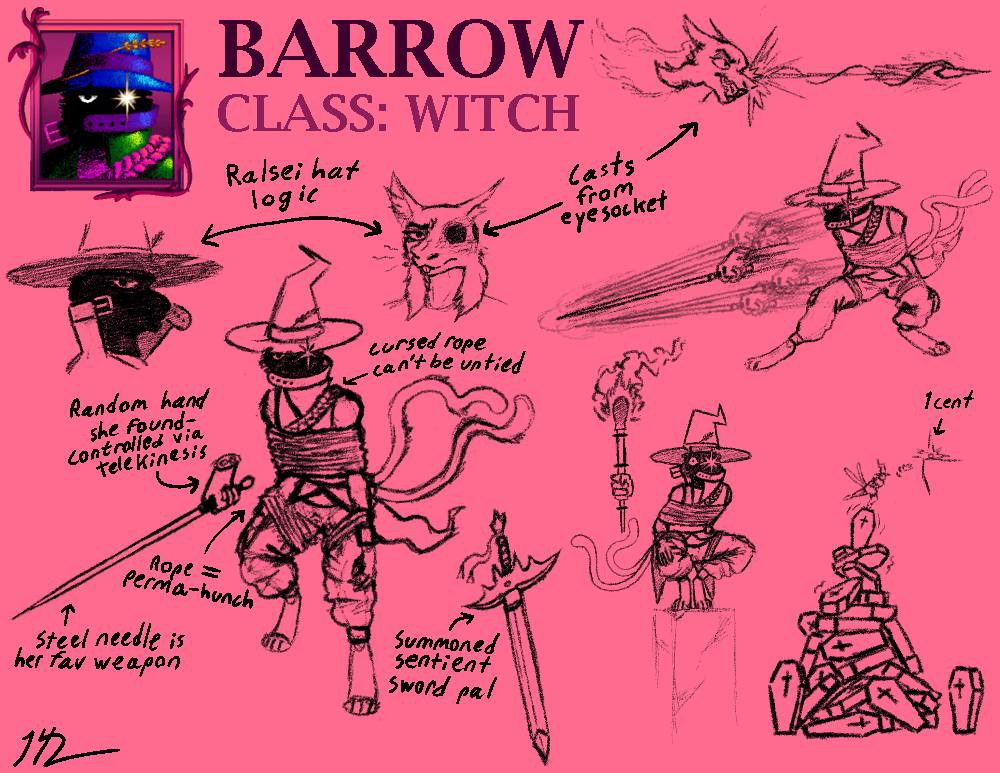
This is Barrow. Next to her name is the portrait I scribbled in about an hour before bed. Across the course of the game, what started out as a random wizard guy with some wheat in his hat and a glowing eye evolved into a bound little loot-gremlin of a lady who had never before known joy until she was thrown into a well.
I just want to preface by saying, I had no idea just
HOW MUCH the option on character creation to import a custom portrait would color my experience of this game. The character portrait presets are a diverse cast of well illustrated peeps, from vampires to knights to slimes to furries. They and the pronoun option encourage creativity in who you want to play, and set a tone for who your character can be, but allowing
custom portraits takes it one step further, because almost nothing appeals to me more than something I've made with my own imagination.
By allowing me to make a character from scratch, I was able to form a basic idea of what I wanted and as I played and became familiar with the world I found that idea shifting to meet it. I intended for Barrow to be a stiff and silent wizard, but dumping all my points into speed, strength and intelligence lead me to begin picturing her as a lean and feisty spellsword who loves to hit where it hurts before scampering off. Naturally, I made her a furry, so I had to justify why the hand you see in the game is clearly human and clearly disembodied. The answer I came to was that she had been bound in cursed rope to keep her in check, and upon landing she found the hand which she could use in place of her own. Being a former flesh-witch, naturally her telekinesis only works on bodyparts. While not stated, I get the vibe that the majority of people in the outworld are human or human adjacent, so why is she a furry at all? Again, being a flesh witch who despised the world for what it was and all those around her for the torment and suffering she witnessed and endured, Barrow attempted to change herself into a beast to wreak havoc on civilization, only to be stopped and bound before the ritual could be finished.
As I put myself in the shoes(paws) of my character, a funny thing began to happen. I was so enamoured by the world, the sound design, the art direction, the lore, the weapons, the spells, I couldn't imagine Barrow feeling anything but joy in the depths of the Great Well. A place all to herself to explore, of forgotten stories, secret passages, and the occasional friendly face. For all the pain above and all the pain below, at least
this place had a direction, at least there was always
somewhere she could go. So she ran, and ran, lead by her needle, fire and lightning and stone and coffins pouring from her open eyesocket as she ventured into the unknown. As she faced trial and tribulation, and her joy only grew, she came to undestand her wish for destruction had been so petty and shortsighted, stupid even. "To match suffering with suffering leaves only suffering," as she would think to herself(she's not very eloquent). So Barrow resolved to give the world the very same gift it had given her:
Somewhere to go.
Okay okay okay,
obviously this story won't be your experience with the game. Probably not, at least. But this game has been a more enjoyable roleplay experience than any video game I've ever played before. Seriously. It's not as big as Skyrim (my previous favorite video game to roleplay in), it doesn't ask you really any questions of its own, but if you come with the right mindset, you'll leave with a story that'll stick with you for a long, long time.
That's what the game wants. I'm in love with Lunacid, plain and simple. It doesn't limit you with species, or gender, or disappointingly limited appearance sliders. You can play whomever you'd like (so long as they have a weapon and cast the occasional spell), and it's up to you to learn how they fit into the world.
Gameplay
While Lunacid's gameplay is quite strong in my eyes, there are a couple flaws that rear their heads fairly quickly. One in particular seems to be more of a me-problem, but it's a pretty big one that I'll get to in a bit.
For the most part, Lunacid's gameplay is quite simple and yet it allows for an interesting diversity and flexibility. You have pretty much two actions you can perform with your weapon: attack and block. You can hold the attack button to charge a stronger hit, or you can spam weak hits. I'll be honest, you'll pretty much want to charge your hits every time, which isn't really a problem on my end because it encourages you to time your attacks and move around rather than simply betting on who can break the other's healthbar first.
Skills play a pleasingly significant role in gameplay as well. I've played plenty of games where skills only ever recieve minuscule bonuses, or where power increase is just too gradual to notice much of a difference until you find yourself back in an early area and realize how much stronger you are. When you level up in Lunacid, however, the way you allocate points often has an immediate and noticeable effect, particularly speed, strength, and intelligence. By the end of my playthrough my movement speed was easily twice that of when I started, and that was alongside spreading my points to make a more rounded character. If you focus on just what you feel's relevant you can make someone pretty broken. The tangible effects skills have play well into combat. Weapons hit harder, your movement becomes more nimble. Oddly, not enough games allow you to increase jump height. While dexterity was a bit neglected on Barrow, I'm curious to see just
how high a character who prioritized it can go. I leveled dex just enough to easily jump over most enemies and get a good stab in when I do. Intelligence is quite a useful skill altogether, as it determines max mana, spell damage, and spell charge rate, meaning at higher levels you can cast early game fire spells pretty much as fast as you can tap the key. I should also mention Lunacy, which is not a skill but rather a status effecting both the damage you take and the damage your spells deal. It increases in two ways: A. using spells and B. the phases of the
actual moon. I find this a pretty neat little mechanic and rest assured you aren't the only thing in the game dependant on the moon.
On the other end of combat, enemies are diverse and interesting. While most are fairly easy to outrun a few can keep up quite easily, and will hound you until either you or they die. The majority of enemies have resistances, with some having outright immunities, so it's smart to keep changing your loadout as the situation calls for it. Something I find kind of neat is that while all movesets are limited to one or two attacks, the majority of enemies have at least one spell they can cast, even some animals. I don't know, most fantasy settings leave magic to witches and wizards, it's interesting to see a world where it's something most creatures take advantage of as a means for survival. I must say though, status effects can be
very unforgiving. My resistance skill never got super high, but I honestly didn't see a huge difference with it, unlike the other skills. That could just be due to the fact it's easy to panic when you can't use your weapon, and 15 seconds begins to feel like 45. Getting blinded's just a pain though, honestly. I feel like resistance would do well to lower the intensity of status effects, not just duration.
Exploration is the name of the game for Lunacid, and while I personally love it, I'm sure a few people disagree. For the most part, every area is incredibly well designed from a level standpoint. Navigation is fairly easy, except in the few purposefully confusing areas such as Accursed Tomb and the Arena, and objectives are easily recognized and completed. Views may begin to differ when it comes to secrets, though. I must say, some are quite good. Every now and then I see a wall and just think "hmm, looks like a pretty good place for a hidden door" and lo and behold it's there! The way to Tower of Abyss is like this,
perfectly missable but I found it within about 30 seconds of entering the area due to some clever pathing. Two notes I should make: 1. No necessary area is hidden behind a secret door and 2. Hidden doors can easily be found by watching the lower left of your screen for a question mark. If you're a completionist, you're gonna want to skirt every wall you see, and I feel like this can become tedious and unfun, which is why I honestly just looked up the locations of things I needed if I believed them hidden somewhere. I get wanting to find stuff on your own, I really do, but I've taken it as a fact of gaming that I find what I reasonably can on my own, some stuff'll need to be looked up sometimes, and the rest I don't care about can be found in a later playthrough. Now all that said...
There's only one ending you're gonna get without the internet. Technically you can get another if you're a previously mentioned completionist, but there are two particular endings of the four that I just gaurantee you won't get without looking them up, and in my opinion that's a bit of a problem. I love the true ending, I do, but I
am in agreement with some folks that there should be some kind of hint for what to do when it comes to the others, whether it be flavor text or whatever else. I think the game manual was actually a bit of a missed opportunity in this regard. While it's helpful as an overview for the game, I think a small section of hints and clues for certain things wouldn't be remiss, sort of like how Tunic's manual gradually reveals secrets to you as you collect pages, perhaps the game's manual gradually uncovers itself as you progress. From a player's standpoint instead, maybe those pages are always available, but you need to give some sort of confirmation before you turn to them, to reflect that you're pride's buckling and you need
some kind of hint to get through.
Finally, I need to stop dancing around it: weapons and spells. While I absolutely love the spells, I have mixed feelings on the weapons... So let's start with spells.
There are a large number of spells you can aquire throughout the game, many of which are quite useful, interesting, funny, or all of the above. While the power of aggressive spells scales greatly with each new version you get, no two are the same. It's not boring like Skyrim where you shoot fire, then throw a fireball, then throw a big fireball, each fire spell has different behavior from every other. That said, flame spear, ice spear, dark skull and slime ball all behave fairly similar, but they're all basics so I can forgive that a bit. Where Lunacid really shines though are the utility(?) spells. I haven't played a whole lot of games with magic, yes, but coffin is such a no-brainer of a movement ability I'm shocked I haven't seen it more in other games. It does what it says: it spawns a physics object coffin that can be pushed, tipped over, broken, whatever... And there's no limit to how many you can spawn. I didn't bother to level up my Dex because I just had a pile of coffins at my disposal whenever I needed to climb, I absolutely love it. Other spells in the menagerie include lithomancy (don't read the description, just use it on a vase or crate, trust me), corpse transformation which literally just kills you, bestial communion which lets you read some enemy's thoughts, and icarian flight which helps you up but does
not help you down.
While I love the diversity in spells, and that elemental weaknesses and spammable lowered cooldowns mean even basic casts can remain relevant, the same can't always be said for weapons... Which sucks because I
LOVE the number of weapons in this game. Rather than limiting you to six weapon types and just giving you stronger or more interesting versions throughout your playthrough, in Lunacid you are met with a huge variety of unique and individualized killing tools. From claws to clubs to swords to axes to sickles to torches to bows to hammers to spears to maces... Except swords and spears are pretty much the only thing that's plural. This means that if you want to play a dagger, or a halberd, or a shield for example, you pretty much get only one or two choices. While you have the option to play just about any weapon you can think of, its
viability is severely dependent on stats that for most weapons, simply never change. Strength does increase melee damage, but not enough for an early game weapon like the steel needle (that I immediately canonized as Barrow's weapon of choice) to get anywhere
close to competing with late game bosses and enemies. Max damage isn't always the point, certainly not when I play, but a difference of 24 hits VS 4 with no resistance is absurd. In my head Barrow beat the entire game with needle in hand... But in game it was with a huge super magical glowing blue sword.
I love the weapons in this game, I really do. Late game weapons become particularly interesting with some new effects and mechanics! But in a game where I had so much fun roleplaying, I felt a little cheated that I
had to start using more powerful weapons to spend a reasonable amount of time on enemies rather than sticking to the tool that really
felt like Barrow. I don't mind elemental immunities, they can play a good role in varying combat, but with so many niche weapons it's disappointing some need to be set aside or, even worse, are irrelevant by the time you reach them. My one complaint for immunities is that I feel too many enemies are immune or resistant to dark damage, while too few are weak to it as well. You get a disproportionate number of dark damage weapons only to find they're pretty niche. Like my problem with not being able to live up to Barrow's style as a nimble and precise striker, if you want to play some kind of corrupt wizard or tormented knight ya still gotta pull out the good-ol' shining blade for 50% of enemies, which isn't very fitting for someone who's a creature of darkness 100% of the time.
In Conclusion
Lunacid was already cool on the Steam page, but it became an unexpectedly engrossing and joyful experience to play that has left me with a pleasant little gremlin I will carry for a long, long time to come.
While I doubt it's the cup of tea for those who expect the game to do most of the story work, for daydreamers like me it was paradise and a half.
X
Music and Art: 10/10
Every track hits, and complements not only the tone and emotion of an area, but often the enemies of that area too, leading to a wonderfully cohesive and atmospheric experience.
Story: 8/10
If you're looking for some grand epic, look elsewhere. But if you want a world to explore and a character you designed to experience it through, this is your jam. 10/10 in my heart.
Gameplay: 7/10
Combat's simplicity may not be for everyone, but dang running and jumping has never felt so nice. Insane weapon and spell variety, but don't get too attached too soon, you'll have to find other go-tos.
Overall: ≈8.5/10
08/09/2024 - Pseudoregalia

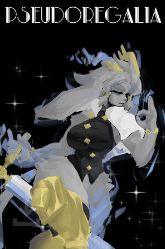
I would like to preface by saying I do not consider my opinion the pinnacle of truth, (particularly not in the case of this game. I'm pretty biased on the matter lol) nor do I claim it will remain firm and unchanging. Pseudoregalia is a game I really enjoyed playing, so I thought I should make a review to help arrange my thoughts on it. I should also mention I've fallen way behind on when I wanted to write this review, so it's been a few months since I played Pseudoregalia.
Pseudoregalia is a 3D metroidvania set within a strange abandoned kingdom caught in a dream. The protagonist, Sybil, gradually unlocks new movement abilities, which allow her to explore the kingdom further.
In this review I will cover three main points: Music/Art, Story, and Gameplay. "Music and Art" refers not only to the quality of the soundtrack and art direction, but how it's utilized within the game. "Story" encompasses both overall story, as well as worldbuilding and writing. "Gameplay" refers to interactive elements, from combat to getting around.
Music and Art
While it might not look the part initially,
Pseudoregalia is one of the most gorgeous games I've played in recent memory. Let me be clear on this point: I see beauty as entirely independent of graphics quality and fidelity. What's important is not the detail, but rather the intention behind the visual design of a game. With that made clear, Pseudoregalia, wielding graphics reminiscent of the nintendo 64, has visuals which have managed to worm themselves deep into my head.
To start, Sybil's animations are quite pleasantly expressive. Each attack and movement ability pulls her into a distinct and dynamic pose, helping to solidify without words that she's a confident fighter who navigates her environment with a natural grace and ease (even if you play in a hardly graceful manner). One of my favorite animations is the high jump, which has a very satisfying squash on the slam down and stretch on the actual jump. I also quite like the one-footed pose while she stands at the very top of any pole, the wall kick, and that forward leaning jump she performs on a successful kick directly away from a wall. Such good animations mean it's just as satisfying to watch the tiny goat lady bounce around the world as it is to actually chain said bouncing effectively.
The environments are the real draw to the game for me though, and most definitely my favorite aspect.
Pseudoregalia's in an interesting place given that it's the first 3D metroidvania I've played. While traditional 2D metroidvanias are often highly detailed, able to slide complex environments into their backgrounds, the world of
Pseudoregalia is characterized by just how sparse it is. Most rooms are completely empty, perhaps holding a stray statue, enemy/NPC, table or lantern. That said, the lighting, wall and floor textures and music lead each area to have a unique identity. Some areas like Twilight Theater, Sansa Castle, or The Underbelly are entirely confined, while Empty Bailey and Tower Remains are placed in the wide outdoors. I mean it in the truest, least watered-down sense of the word when I refer to these spaces as liminal. Every location feels like a dream of itself, the impression of a dungeon, the suggestion of a theater, with the color palette and music to match, but neither the detail nor people to follow through. Befitting of the setting these places look to me like broken recollections of what they really should be.
And no location captures this feeling better than Sansa Keep.
Built from pinkish-purplish-grey brick, the floors tiled in a simple repetetive checker, the walls cast in washes of white light with no visible source, and the air humming with dour strings, Sansa Keep feels truly like a forgotten fortress. It's completely empty, one of the emptiest areas in the entire game, and yet its
music feels the most severe. Shit happened there. Royal courts met and made decisions, assassinations took place and war plans were drawn. Wine and blood spilled in equal measure. I look at the barren walls of Sansa Keep and I don't really see boundries, simply a separation between one room and the next. I see an obfuscation, an erasure, but that severe music leaks from the cracks all the same, pouring into the air in rememberance of a time long past. I imagine the walls might spit at the corners, spreading apart to unleash a torrent of jesters of all shapes and sizes, the restless spirits of the comedy and tragedy in the failure of a kingdom. I highly doubt you'll feel this way about Sansa Keep, reader, but to find something that fuels your imagination as Sansa Keep fuels mine is a feeling to be treasured.
As evidenced by how its interaction with Sansa Keep throws me into a fit, the music of
Pseudoregalia is gorgeous in its own right. Pieces such as
A Forgotten Fortress(Sansa Keep),
Outside The Castle Walls(Empty Bailey), and
Obscure Voices(The Underbelly) each lend an incredibly distinct personality to their area, and do so significantly more effectively than just about any other metroidvania I've played, without feeling out of character for the game as a whole. The music pulls more than its weight in giving identity to each location, practically filling every empty room with clutter through sound alone. That may read as hyperbole, yes, but if your imagination's as hyperactive as mine you should know exactly what I'm talking about.
But the tracks which shine more than any other in my eyes are those for the two bosses. Each is crisp, incredibly energetic, and lends itself well to the associated boss. While I tend to dislike boss themes that sound too upbeat because they make it feel as if there was never any question over who would win (thus removing any sense of danger), the first boss theme is a welcome exception.
The Fiercely Loyal walks a fine line of embracing Sybil's quick and graceful moveset while allowing threating tones to creep in as they see fit.
Paramnesiac, the theme of the final boss, sounds light and beautiful at first, but carries a certain sadness to it as well. Both Sybil and the final boss are incredibly agile characters, and this song just demands one to imagine two people swinging, ducking and whirling around one another, both trying desperately to land that final hit as they dance. It doesn't sound inherentely threatening to me because see it as a song about last chances. The pair are both doing their very, very best to win.
Story
While
Pseudoregalia's art direction lends surprising depth to a seemingly empty world, the same can't be said for the story. It's a game which simply leans significantly further into gameplay than anything else. Just take Sybil's opening line as proof. She's only got one, at the very, very start of the game. Even in the dialogue at the end of the game Sybil's own lines are left unseen as the final boss speaks a bit.
Since there's little to no story, I don't feel bad describing it here. If you'd like to avoid spoilers don't read the rest of this paragraph. So essentially, the game begins with Sybil entering the world through a mirror in the dilapidated dungeon, worried about whether she's too late. She travels from area to area, eventually unlocking enough abilities to defeat the princess, which results in a short discussion in which Sybil's name is revealed, as well as the fact that this was all a dream. My idea is that "The Princess" has simply been dreaming too long and the dreamworld is beginning to crumble, so Sybil, a dream cop sort of character, came in to wake her up. Perhaps the dream world always exists, and the NPCs are its natural denizens, but if people like The Princess spend too long in the dream world things can go awry, hence the need for Sybil to wake them.
There are actually NPCs in this world, who take the form of little goatlike people, somewhat reminiscent of Sybil. Unfortunately, very few of them have anything to say about the situation/story. The vast majority of them take the "random guy" approach to NPCs, where you walk up, they make a strange statement, and you go about your day without ever responding. This methodology for NPCs is always fun, but doesn't usually fill out the setting in any significant way, as is the case with
Pseudoregalia.
As you can see, the story isn't super developed. Basically a goat lady sets out on a mission and that mission gets completed. I don't mind this approach, not every game needs a grand story arc, but I would have liked a little more to fill out the world, and for the path to the end to be a little less straightforward, in a way I'll mention in the next section.
Gameplay
I'll level with you:
Pseudoregalia's easy. Sybil's full moveset allows you to navigate the map quite proficiently, and you can get in and out of every room quite reliably if you can find the right path. You can actually beat the game without unlocking
every ability, but there are some areas where the optional mechanics stop being such.
So, it isn't necessarily
easy, after all that word is completely subjective, but the game's difficulty is inconsistent, in some unusual ways for the genre. Once you know each enemy type (of which there's only a few, who are all spread through the map rather than being area specific), it's pretty trivial to avoid them. Even the lightning hand boyos, who are a pain and priority targets at the start, can pretty much be avoided entirely in the late game. The simple fact of the matter is there ain't much a full-powered Sybil can't run circles around, even when controlled by a player who isn't particularly skilled (such as myself).
Apart from the final boss,
Pseudoregalia's late game is pretty much nonexistent. I feel like it really could have used more challenging encounters and enemies with quicker movesets that encourage more intelligent use of your abilities. Perhaps more difficult enemies could spawn as you progress/new abilities are unlocked, similar to
Laika: Aged Through Blood? I would have really appreciated more bosses too. While the two you get are superb, the first is quite close to the game's start while the second is at the very end, with only parkour and avoiding fodder placed between. It poses a bit of a pacing issue, with you expecting there to be another skillcheck around every corner, only for it to wait until the very very end to come. I should mention as well that the first boss becomes a standard enemy in the form of weaker stone statue versions. While the stone statue angle does help to avoid the disappointment of seeing a previously
unique enemy copied and pasted into later encounters, it still lingers somewhat, especially when they're copies of the
only other boss in the game.
If I were to design more bosses for
Pseudoregalia, going off the theme of a royal guard in the Dilapidated Dungeon, I would put some kind of maddened performer in Twilight Theater, a groundskeeper in Empty Bailey, a court jester in Sansa Keep, and an executioner in The Underbelly. Not only could these serve as further skill checks, but as notable moments through your time in the game, which help to fill in the space that a story otherwise would.
I cannot forget that there are time trials which can be completed to unlock new outfits for Sybil. These provide a significantly greater challenge than anything else in the game, but they are completely optional, leaving most players to ignore them. I love me some alternate outfits but I just have zero interest in having to decipher and practice the right moves to beat each trial in time. I unlocked the Professional and Soldier outfits and that's good enough for me.
In Conclusion
Pseudoregalia is truly a fun, impressive, and surprisingly atmospheric little game. It's short and sweet, but it's a bit lacking in complexity of flavor.
Either way, I highly recommend buying it! Sometimes it's just nice to be a tonfa-wielding jumpgoat with RBF.
X
Music and Art: 9/10
Beauty in simplicity. The world is made vivid and distinct through great music and great environments.
Story: 5/10
Better to have no story than to go all in on a terrible epic. That said, I wasn't encouraged to ask many questions, nor was I given many answers. Pacing feels odd regardless thanks to the low boss count.
Gameplay: 7/10
While platforming is quite satisfying, Sybil's full moveset feels overdeveloped, with few moments later on that prove a significant test of skill.
Overall: 7.0/10
08/07/2024 - Beach Trip Update
Here we are, about a month from the anniversary of my first blog entry! I've gotten a lot done this year, and while progress on the site has been spotty I've managed to keep myself occupied with at least something just about every week! Heck, look at me, I'm at the beach currently and while the comic's on pause I'm still workin' on the site. There's a tropical storm blowing through and I have a chest cold right now so not like there's much else to do, honestly. Besides, I've been letting small things pile up for a while, like checking for mispellings and doing some minor reformatting. I may or may not start readjusting the gallery while I'm here. I think I'll remove the extra galleries and only have three: "Portfolio," "2022-Present," and "Old Stuff," the last of which will feature some of my real early pencil drawings and such.
I'll be writing a game review for Pseudoregalia tomorrow, and after that I'll get on making sure all my code is backed up. My comic's been keeping me really busy lately, it's honestly hard to believe I've been working on it for 31 weeks straight now, with only a single week break so far. New pages are always on the schedule, but once I finish on a big personal painting I'll start on the Kool Lynx page and filling out the rest of the gallery. After that, another sizable break from site updates will be in order, so stay tuned but don't expect anything but pages to come too soon.
X
02/13/2024 - Comic and Felt
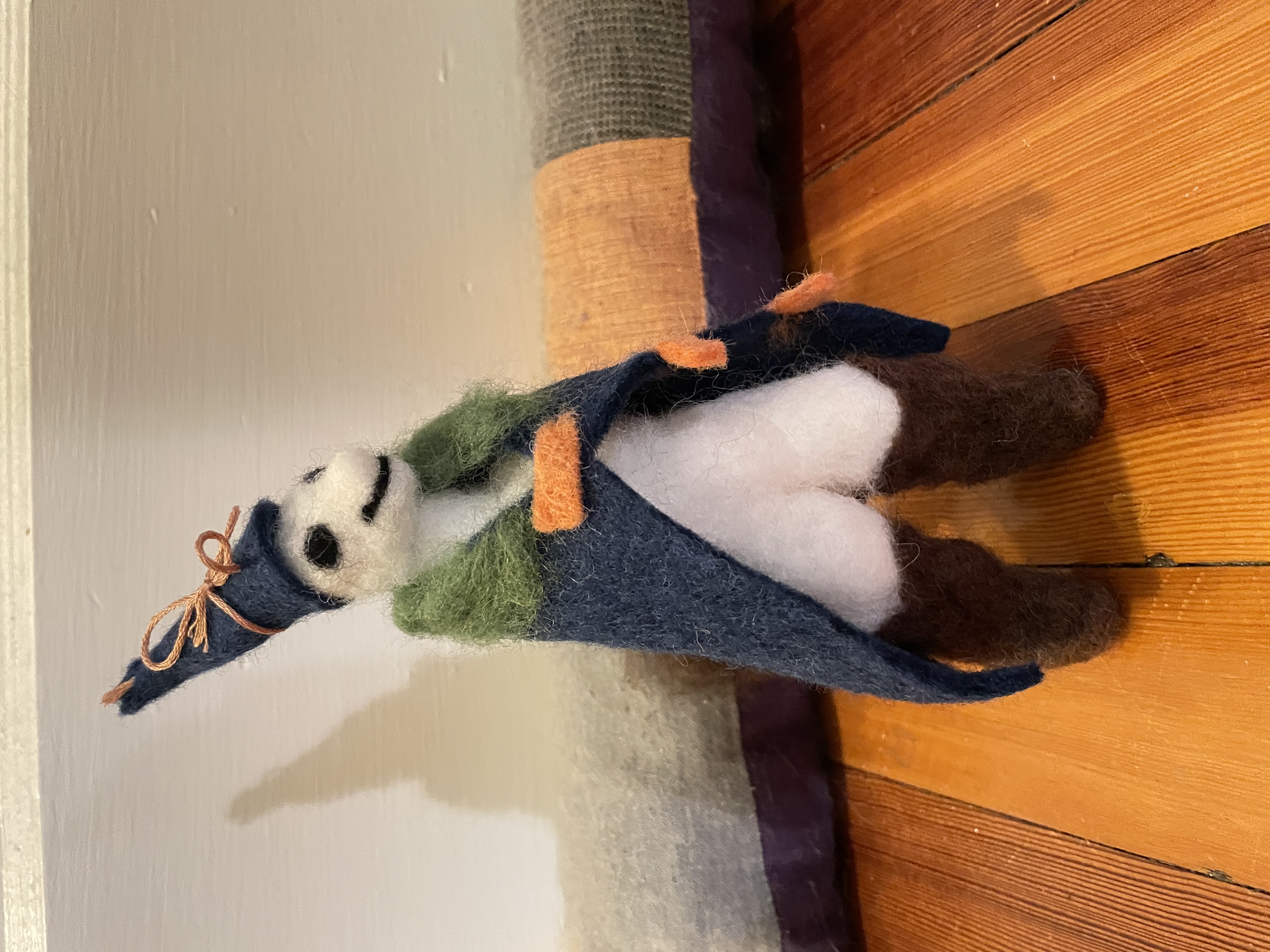
I have two major updates here! Number 1: I've completed the Comix page as well as the page for A Backwater Repose, and I have multiple pages up already!
I've just started so there's not much to read yet, and the art is kinda iffy, but I plan to see this comic through, and I've done well sticking to my "page a week" schedule so far. Only thing left to do for it is create the character page, which I'll start making assets for tomorrow. I've managed to complete a couple other projects on the side while making the current pages, which bodes well for me having limited, but remaining free time to pursue other things.
Speaking of other projects, we come to update Number 2: I've made my first needle felted piece, who can be seen above! Her name is Delia and she has no arms, but she makes up for it with a shmancy cloak and cute pointy hat. I think she's a wanderer, exploring forests and old places in an 80's/90's cartoon-styled adventure that I will definitely never create.
My goal with needle felt is to create little characters I can possibly sell. Being my first project and made from the wrong type of wool (she's 100% roving, future projects will use a batting base), Delia isn't a proper reflection of the product I want. Preferably I'd like characters ranging from 4 inches to eight inches tall, all containing much more detail. At least, as much detail as I can manage with wool on such a small scale.
Anyway, this is part of an ongoing effort of mine to gradually find ways to sell my art. Not sure how I feel about comissions, so I'll try instead to create prints, needle felted adoptables, dioramas, and maybe, far in the future, physical copies of A Backwater Repose and Soulbearer.
We'll see what the future has in store. For now I work.
X
01/03/2024 - A Backwater Repose
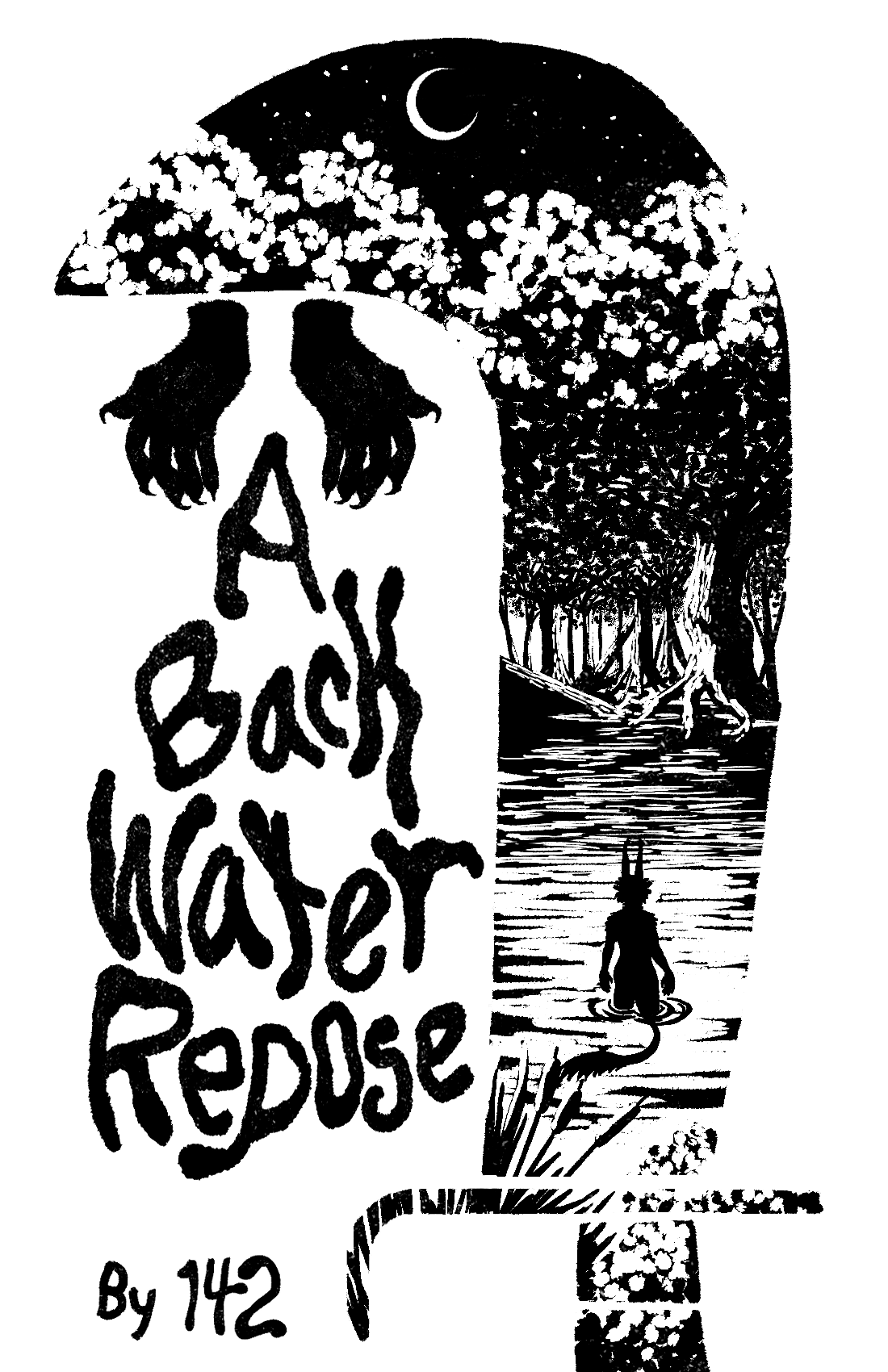
Blurb: Sheriff and local witch of Dull Water County, Mrs. Vera Devoy has filled many roles in her day. But in the aftermath of a murder close to home, she finds herself playing detective in Old Shepherd, a city of ancient ruins wrapped over in new construction. So far from her familiar swamp, Vera feels a fish out of water, and to make matters worse...
She has little time left.
So! This is my webcomic! Well, it will be my first webcomic, once I actually start illustrating and posting pages. This blurb here will probably change a few times over the course of my making the comic. I'm better at writing stories than I am at writing about them, after all!
I must admit that I'm a bit scared to start it. I have a habit of getting into big projects, only to fall out of the mood in one way or another and never get my enthusiasm back. I'm a slave to my own whims it seems, unable to regain momentum once it's lost. But then again, I don't think that's always true? This comic itself should be an example! I've had art block for months. Even while making this site, I fell into a sort of obsession where I could make art, but only if it had to do with the Digital Crawlspace. An obsession which crashed about as soon as I took a week vacation, which left me reeling without any sort of motivation.
This comic is making me excited though! Excited to draw, excited to write, excited to build onto and keep editing this site, even. It's a really big project for me; anywhere between 60 and 120 pages. This is a major commitment, but unlike my other projects, I'm no longer in school. Sure, I work eight hours a day, but when I have free time, that time is mine. No art projects or writing assignments or readings or multi-hour nighttime Toon Boom Harmony sessions all placed upon me by classes. If there is any time for me to start something like this, it's now!
I honestly don't know the point of this blog post. I guess I'm just sharing my feelings going in? I love writing. I love drawing. I've got stories to tell and I think this is a serious option for me to try. So here, three days into the new year, I think it's fitting I make a promise: a page a week once the comic section's up.
Starting isn't the hard part, but I will not let this go unfinished.
X
11/05/2023 - Laika: Aged Through Blood


I would like to preface by saying this is my first time writing a review for anything, really. I do not consider my opinion the pinnacle of truth, nor do I claim it will remain firm and unchanging. That said, I figure this blog should be about what's on my mind, and what's currently on my mind is Laika: Aged Through Blood
Laika is a western motorvania taking place within a post-apocalyptic wasteland. The titular Laika, the story's protagonist, lives in a small settlement named "Where We Live," and acts as her settlement's main guardian and errand runner. The post-apocalypse is not a quiet one, however, as militaristic forces known as "The Birds" (who are indeed, all birds) are encroaching on the wasteland, wiping out all unlucky enough to be caught in their path. Now, you may have been caught by something I mentioned early on. This game is a motorvania, that being a metroidvania in which your character rides a motorcycle. This will become very important in the gameplay section.
In this review I will cover three main points: Music, Story, and Gameplay. "Music and Art" refers not only to the quality of the soundtrack and art direction, but how it's utilized within the game. "Story" encompasses both overall story, as well as worldbuilding and writing. "Gameplay" refers to interactive elements, from combat to getting around.
Music and Art
I will not mince words, the music in this game is great. Uncharacteristically chill compared to the rest of the game, the score is more akin to a proper album than a game soundtrack. The majority of tracks feature lyrics sung by the artist, Beicoli, with a few being quite catchy and emotional, particularly in moments where the game fits the music. I am of the firm belief that more games should feature songs with vocals created specifically for said game, and
Laika does not disappoint in that regard.
Much like
Katana Zero, the emotional music contrasted by extreme violence in the trailer is what immediately sold me on this game, really showing that our protagonist may be committing horrible acts, but she takes no joy in them. But I'm getting ahead of myself...
I feel, however, that the implementation of the music leaves something to be desired. Each song is a collectible you gather by shooting boomboxes around the map, or by purchasing them from gas stations. While playing, you cycle through each song like a playlist, and can switch between which tape you want to hear in the menu. While an interesting idea, I find it a bit lackluster, as no song is area-specific. In other metroidvanias each area has its own infinitely-looping track, which I actually find less irritating, as it gives time for your ears to grow used to the music. But as stated before,
Laika is like listening to a playlist constantly on repeat, and it grows grating over time for songs to constantly switch.
Unfortunately for
Laika, the soundtrack lacks diversity in energy. Boss themes are my favorite part of a game's soundtrack, and I found the low, threatening boss themes to not quite be enough. They sound
tense but not like you're truly in any danger. Likewise I could have done with some more energetic songs like
The Whisper for standard gameplay. Something more fitting for when you've got to shoot a lot of birds.
When It comes to the art I can be much more brief: it's incredible. I can absolutely see inspiration from Supergiant's more recent games such as
Pyre and
Hades, particularly in the promotional art and world design. The characters are adorable, except for the few designed not to be, and all of them have a distict personality you can catch just from a glance. I. Have. No. Idea. just
how much effort it must have been to create the map. Unlike
Blasphemous or
Hollow Knight, the game world is not built from small rooms placed upon a square grid, which allows the developers to construct the world from pre-drawn tiles and setpieces (at least I assume that's how they do it). No, the
entireity of the map looks to be hand-drawn, with each individual area being its own separate, but singular, illustration. I'm not going to pretend I actually know how this may have been done, but if each area truly is an entire illustration, the time and planning required to do such a thing is truly impressive.
Story
As you may have guessed from the title, this game is, in a way, a coming-of-age story. The ideas of succession and growing older are quite prevalent in Laika's relationship to her mother and daughter, and even to her relationship with the village as a whole. It's no secret that Laika can't die. Not permanently, at least. Her family line bears a curse of resurrection, passed on from one generation to the next when the daughter "bleeds" for the first time. Laika is the current bearer of immortality, caught between her mother who has long given it up, and her daughter who has yet to take it.
Laika does a good job of telling about its world, but never too much. You learn what you need to learn and the rest is left up to mystery or interpretation. While this approach can feel low-effort in some games,
Laika certainly succeeds, with each tidbit of information, from details of the world to details of Laika's curse, being both interesting and not quite enough. I think it's always important to leave some questions unanswered, as that is how just about any great piece of art lingers in someone's mind for long after they've played/seen/heard/watched/read it... At least it is for me.
Laika will leave you wondering and hungering for more, which is, admittedly, a double-edged sword.
I may not be the most observant, but I found the world to be rather sparse when it came to NPC interactions. Plenty can be found in "Where We Live," but throughout the world there are essentially none until later in the game, when most sidequests are completed. I feel it would have made the world feel a little more real if these characters appeared earlier, and possibly more appearing throughout various stages of the game. I would have also liked just a bit more non-sidequest dialogue with the characters in the villiage, anything from random thoughts to telling a bit about themselves. Being someone who likes to go through every character's entire dialogue tree as soon as I see them, I found the dialogue running dry quite quickly, with some characters offering only a couple more lines later on. Some more flashbacks and a bit more buildup to the ending would have been ideal as well. The final boss' dialogue is a bit lackluster as well.
Apart from being rushed, I am mostly fine with the ending. I feel the cutscene was a bit brief through and a post-credits scene was in order, though I can't share why without spoiling.
A final note I'd like to mention is that I am in love with the naming conventions for the areas of the map. Rather than the village having a proper name, it is simply called "Where We Live." Likewise, other places are named along the lines of "Where Our Bikes Growl," "Where Doom Fell," and "Where Our Ancestors Rest." Tells you about the Laika's relationship to a place before you even arrive there.
Gameplay
Needless to say, the gameplay of Laika is incredibly innovative, at least when it comes to the metroidvania genre. Movement is entirely motorcycle based, meaning you hold W to accelerate, S to brake, A and D to tilt/flip, and hit SPACE to change direction. Traversal of the world means ramping from one ledge to another, or throttling along distant straights, or spiraling through loops. I find getting from point A to point B far less tedious than in traditional metroidvanias, and actually in some instances it can be quite satisfying. Platforming is a non-issue here, as most of the challenge comes from the birds.
The birds in question never move, and they die in one shot. However, you die in one shot too. A game without a healthbar, I feel like it's as much about the perfect run from A to B as it is about the actual missions you're sent on. A points system would have been quite at home in
Laika, encouraging you to take greater risks while navigating the world. As it stands though it's up to you to find motivation to not die. At the start of the game you face only birds with pistols, but as time goes on more difficult variations begin appearing. Once again straying from traditional metroidvanias, the same bird types are spread across the entire map rather than being relegated to specific areas. It's the combinations which make them dangerous.
One thing I find irritating in games is when they don't build upon their own mechanics.
Narita Boy is a perfect example, featuring mechanics specific only to certain areas or even to certain fights, which are then thrown away immediately after. A good game has a sense of progression, showing you something new and incorportating it into the game from then on out. Laika, unfortunately, does not give much attention to the three abilities you unlock: a jump, a dash, and a hook. Without spoiling too much, the dash essentially makes the jump obsolete, and the hook is neither a movement ability nor an attack, having no use outside of specific, rare instances. I was disappointed by this, as it leaves me feeling like there isn't a true sense of progression similar to what you find in
Blasphemous, where the map seems to suddenly "open up" with each new ability you get. There are new weapons to unlock, but not a huge incentive to use them except for the shotgun. However, I find the machine gun a good backup for the rare instances the pistol is not enough.
There is also a cooking mechanic which seems quite useful, giving you various buffs which last a generous amount of time. However, you can finish the game without ever opening the cooking menu.
Last bit I want to touch upon for gameplay is the bosses. Like their music, I wasn't too impressed with the bossfights themselves. Most of them feel like a scripted sequence of events to survive, rather than an actual proper fight. To some extent this is understandable. Since you die in one hit and have limited movement, you can't have a boss that's
too unpredictable. But something about the bosses just made them feel too easy. It's more satisfying to me to beat Crisanta's third stage with only a sliver of health left than it is to make it through one of
Laika's fights with no damage. One was a hard won fight, the other was beaten the only way possible. But I also have to ask if there was even a better way to go about it?
Laika's mechanics pose unique problems for a developer to solve when creating a boss, and I can't think of any better ways to go about it.
In Conclusion
Laika: Aged Through Blood is an innovative game which I believe suffers from its position as much as it benefits. A lot of heart and soul was put into this game and it absolutely shows, but it also faces unique issues which cannot be found in other metroidvanias. It is a
motorvania after all.
I've written more criticism than compliments for this game but make no mistake, it's good! I would suggest picking it up on sale, but they have a demo, so play it! If the demo seems your thing then pick it up full price, you won't regret it. I know I don't!
X
Music and Art: 8/10
Incredible art, music is great but needs variety.
Story: 7/10
Good characters, good world, could use more dialogue and better pacing.
Gameplay: 6/10
Innovative and fun, but lacks depth and bossfights were not terribly engaging.
Overall: 7.0/10
10/09/2023 - Zine Fest
On Saturday I went on a day trip to Richmond VA for Richmond Zine Fest! I live in Virginia and close enough that it was feasible to drive there and back in one day, so I left early in the morning and got to the public library (where the zine fest was held) around midday, and had plenty of time for a thorough look around!
Before I continue further, I should probably share what a "zine" is! Zines, (short for "magazine") are self-published works, typically taking the form of small booklets. They aren't mass-produced, but are instead small circulation and are printed and bound by the author or a group they work with. Most you'll see are made from a single sheet of paper printed from a copy machine then folded into a booklet, though more elaborate and larger zines are common too! As far as subject matter is concerned, they can be about anything! And I mean, literally anything, from political commentary, to history facts and tidbits, to comics to poetry to collages to dadaist nightmares.
I haven't been terribly productive zine-wise as of late, not really since I started college and I never regained my steam after graduating. It wasvimportant to me to attend this year's zine fest, as it was the first one since the Big Goof locked us all inside, and I wanted to catch up with some people I hadn't seen.
So how did it go? Well, I'm not great with crowds, so there was a certain level of panic upon seeing how busy it really was in there, but I eventually got the flow and spent about two hours walking laps, eyeballing tables but never stopping unless something caught my eye because I'm too akward to browse someone's wares while they're sitting there watching me. I ended up with a quite decent variety of zines, a couple of which have hit me HARD and were absolutely worth getting. Also grabbed a ton of business cards, a halloween sticker sheet that's too adorable to use, and a couple prints I plan to get framed!
I've definitely been inspired to get back to working on zines from time to time, and hope maybe I can have a large enough variety by next year to even table! In a way I think this entire website could be considered one giant, online zine! I certainly consider my secret pages to be, and might even adapt a couple into a zine format to be printed, because honestly most of said secret pages are just writing projects I don't know what else to do with.
That's not all though! After visiting Richmond Zine Fest I treated myself with a trip to the VMFA (Virginia Museum of Fine Arts). Getting there was tricky, as I tried first to get lunch and gave up. Richmond is bigger than the city where I live, and has a ton of one-way roads with corners made blind by parked cars. And with bigger cities comes heavier traffic, so when I was merging onto a highway packed with cars rushing by, I noticed the yield sign and reacted the way anyone from my city would have when there wasn't a proper clearing to merge:
I stopped.
At which point the seven or so cars which had apparently SPAWNED behind me as I was rolling along the onramp began to HONK IN UNISON, at which I panicked, floored it, and in a blur of events too quick to remember, I had successfully merged into the middle of rapid traffic without being obliterated.
Closer to the VMFA, I made a wrong turn and ended up at an intersection, a two way stop with me waiting at one of the signs. Once more blind due to the parked cars, I quickly shot into the intersection and turned left, not noticing until just barely too late that the road I was turning onto had a median, and the side which I was supposed to be on was, in fact, not the side on which I found myself. I had only just turned in, my car's butt still sticking out into the intersection, so rather than back up I swallowed my pride and drove over the median, the edge of which was conveniently flattened for pedestrians to walk across. A pair of women who had been waiting to cross simply stared on with appaled expressions which suggested that this was most certainly a very common occurrence and I should feel no shame at all for what I had just done, and so I fled the scene feeling incredibly pleased with my display of humanity, and did not confine myself to the VMFA bathroom for ten minutes upon my arrival.
And I absolutely did not spot those same women in the VMFA and quickly stride to another gallery to keep from being seen. That would be prepostrous.
What I did see in the VMFA, however, was a Tiffany lamp which gave me a vision that brought me to tears (it was very beautiful) as well as a number of paintings of British dudes in polo outfits riding(sitting on) horses, which sounds incredibly boring, and would be incredibly boring if not for the commonality that every one of these paintings took place in a landscape of desolate yellow-green fields, golden light, and leaden skies. You were meant to marvel at the men and horses, but it was the empty strangeness of the environments that truly drew me in. They reminded me so much of that place I saw my creature.
Overall I really enjoyed myself, and while I was a major panic boy for half the trip I most certainly can't wait to go again next year!
X
09/22/2023 - Forum Roleplay
So, I'll be honest with ya: I do a lot of text-based roleplay, and used to do a lot more when I was younger. It's something I'm interested in so I'd like to talk a bit about it.
So what is text based roleplay, or just rp? Well, it's when you have two or more writers and each plays their own character, and you write an interaction between them by taking turns. There are a lot of ways this can be done: email, chatting/texting apps such as Discord, and especially through forums. Fandoms (essentially, roleplays taking place in a pre-existing setting such as Star Wars, Marvel, Harry Potter) are incredibly popular, annoyingly so, honestly. I've always been partial to using original characters (OCs) from my own settings and using roleplay as a way to develop them.
I first came into roleplaying on the forum for Destiny, way back when the game had just come out.
Let. Me. Tell. You.
Somehow, Bungie created the PERFECT format for forum roleplay with the Destiny companion app. And I say that wholly, and completely free of hyperbole. There are three central pillars as to how it was perfect: 1.-Format 2.-Responsiveness and 3.-Groups.
Starting with format, Bungie's forum had a unique aspect in that each thread posted within a topic area (roleplay threads generally being posted in #offtopic) were not relegated to a single roleplay. Each thread was a setting in which you could roleplay, and each reply to that thread acted as a sub-thread, with replies that could then be replied to. What you get is a tree of branching paths, with #offtopic as the base, then the thread, then the "post" (a reply someone would make to the thread as a start to a roleplay which anyone could join), and then the replies to each post. While it may sound complicated when explaining it this way, it was actually very easy to navigate. Most roleplay forums are missing a layer, using a Topic(usually based on writing quality), thread(a roleplay), and reply(the actual content of the roleplay) structure. By using the Bungie method where threads act as settings to roleplay in, it was much easier to seek out the genre/fandom you were looking for rather than having so sift through an endless onslaught of unrelated RPs. I should also mention that replies were near infinitely collapsible, meaning that when you looked at a thread, you would only see the posts within and not the replies to each post, unless you dropped them down, which also significantly reduced clutter and navigation time.
Moving on to responsiveness: you got notifications when you were replied to. Both on the website and in the companion app, you had a notifications tab which would show all the replies people have made to you, and they could the tapped/clicked to take you directly to that reply. This ensured speedy roleplay, as writers were actively informed when it was their turn, and the direct messaging system would allow you to bug them in case they were still too slow (don't bug your writing partner. This was just to emphasize the app's features). But in short, these notifications allowed for easy, instant navigation, so that no matter how deeply buried the original post became, you could always find it in a single tap/click. This also made it feasible to accept multiple partners and have multiple roleplays going on the same post.
Finally, and most importantly: The Groups. There was a group system which supported admins, a group chat, and a GROUP FORUM. This group forum was only visible to members and could host events such as tournaments, plots and whatnot, as well as acting as a database to hold all the information for the group's setting and player characters. The chat allowed you to interact with the other group members in real-time and discuss these things... Or you could just hurl insults and be pointlessly antagonistic to each other, as often also occured. The system was perfect but the roleplayers most certainly were not.
The threads, as I mentioned before, acted as settings to be roleplayed in. These threads were hosted by the groups, acting as the public meeting area and main place to roleplay. The group I was most invested in was focused on fighting, and featured the perfect setting: none. I mean, there was some lore to the place itself, but as far as who you could play, you could use anyone. Many people used canon characters(preexisting characters), some used OCs based in or inspired by fandom settings, and some used characters they'd made from sratch. Sci-fi, fantasy, horror, mystery, slice of life, anything was on the table.
I miss it sometimes, but I'm glad the drama's out of my life. I was incredibly immature back then, and terrible at roleplaying too. Using proper terminology, almost every member of the group was illiterate to semi-lit, meaning no one was a very good writer, and posts tended only to be one or two paragraphs, with replies being much shorter. It's funny, I think, that I don't roleplay very often now, but when I do, it's some of my best writing.
Anyway, I just wanted to talk about the forum. All the roleplay groups there are dead now, and half the features I mentioned were removed. I think if someone were to recreate the companion app but purely for roleplaying, it could become BIG amongst roleplayers before sinking into a cesspool of human degeneracy, as these things do. Until next post!
X
09/05/2023 - My First Entry!
Welp, this is my first blog entry! I've been building this site for a while now, and decided to make this fairly simple page after adding a bunch of images to the art gallery. At the time of writing this, I have two secret pages finished, the entrance, the main page, the art gallery, 2/5 galleries within the art gallery, the not_found page, and this blog created. I currently need to add a few fun assets to this blog, as well as finishing up with the dates, titles, and comments for the 2023-2022 gallery.
I got a job recently, the first one I actually anticipate having for an indefinite amount of time. I think that fact really set in after I had a week-long vacation, and came back only to find myself with more responsibility than when I left. For that week I lost all motivation for art, my website, and even for videogames. I'm doing better now, finally getting excited about this again.
It's good I started this site when I did. I'd been feeling myself sinking into an artistic slump for a few months, and it's finally hit hard. This website's been fuelling me though. Can't really imagine drawing anything right now if it's not related to this site in some way.
I feel like I did nothing this year, and to anyone who feels the same: seriously, shut up. You're wrong. I've done soooo freaking much and posted none of it on social media, and somehow my subconscious feels like that means it doesn't count. Seriously, I have worked my butt off, but just because I didn't even allow myself the opportunity to get two likes on each image, that means, apparently, I get to feel like I'm letting myself down. Writing this right now I still feel it nagging, telling me that I should be working harder because I haven't done anything. That's probably what got me in this slump in the first place. Don't listen. Understand that as an artist, you are always working. Do you browse art, watch movies, play videogames, listen to music, freaking read? You're gathering inspiration. Do you do crappy little doodles, or have you started a bunch of big pieces and haven't finished them? Practicing. Have you simply been taking a break? Gathering strength. I have done all these things this year, and I have created a ton of stuff on top, this site being one of those things! It is perfect to want to improve, never stop wanting to get better, but don't let it eat you. We ain't machines, we gotta have some compassion for ourselves.
X

